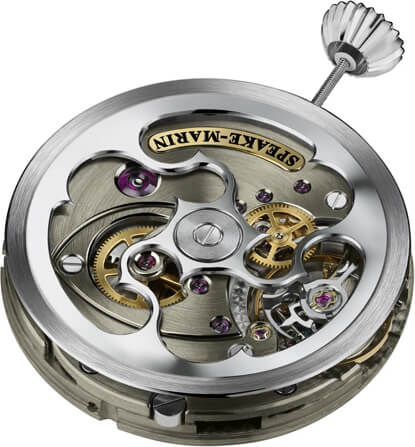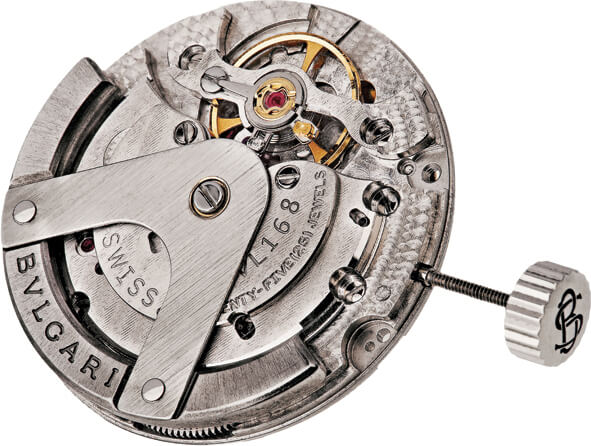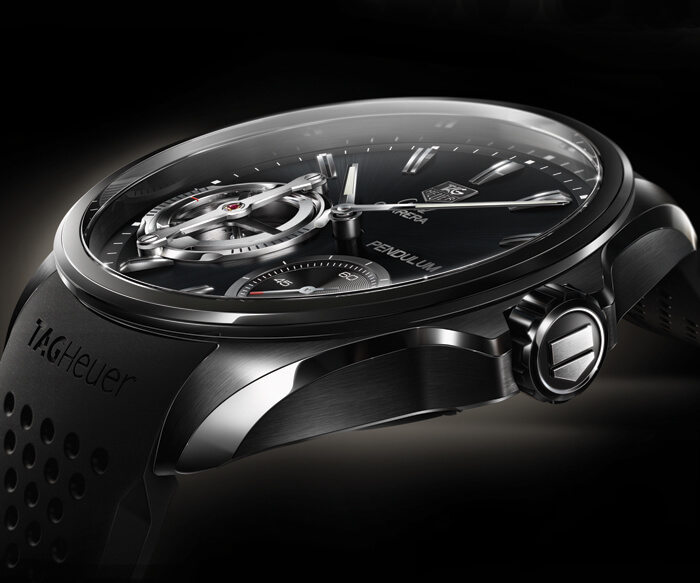The key that opens wide the door to the coveted title of Manufacture. Numerous companies have spared no effort in their quest. Hublot came to Basel with its first in-house calibre, by the name of UNICO, a flyback column-wheel chronograph movement. As the brand explains, “a special feature of this flyback chronograph is the position of its mechanism and the famous “column wheel” on the side of the dial. However, one of its main innovations is the retractable platform escapement, on which the watch owner’s initials can be engraved by special request.”
An "all-terrain" calibre
Bulgari is also pursuing a vertical integration strategy. Already last year it integrated its two brands, Daniel Roth and Gérald Genta, whose name now appears under that of the Italian jeweller. This year at Basel, Bulgari pulled its first in-house movement out of its hat. Calibre 168 is a self-winding “hours-minutes-seconds” base movement with central instant-jump date. It equips models in the Sotirio collection.
This strategy to develop an “all-terrain” calibre for series production reappears at Chopard. Its L.U.C 1937 ushers in the Calibre L.U.C 1.010, fresh from Chopard’s new production unit, Fleurier Ebauches. Says the brand: “This movement represents a significant landmark in the history of L.U.C movements. Accurate, reliable, efficient and designed to facilitate assembly, it was specifically developed to lend itself smoothly to industrial-scale production.
Peter Speake-Marin is his own man
A simple movement but a sophisticated construction of 211 parts: this is the road Peter Speake-Marin has taken for the development of his first calibre, entirely designed and made by his hands. With the SM2, which powers the Marin-1, Speake-Marin has produced a large, precise, elegant movement that can incorporate its fair share of complications. In fact the pre-series of 20 featured a perpetual calendar. The SM2 will be the basis for the following four Marin models, which will keep the English watchmaker busy for the next ten years.

Nor has Pequinet taken the easy option when developing its first manufacture movement. The company, which is based in Morteau, France, but sources virtually all its components from Swiss suppliers, presents the Calibre Royal, which was designed, prototyped, tested and assembled in its workshops. “All present – large date and day, power-reserve indicator, moonphases – and future complications are and will be built into the original main plate,” says Pequinet of this movement. Energy is transmitted via a central barrel axis between two jewels. The movement is visually pleasing thanks to the alignment, along the central axis, of the large barrel, oscillating weight and large balance wheel.
Two DeWitt calibres
DeWitt has stayed true to its tradition of grandes complications when creating its first in-house calibre. The brand’s new Twenty-8-Eight collection heralds the DW 8028 movement, a “robust and reliable” (says the brand) hand-wound mechanism with tourbillon. Its relatively classic construction calls on tried-and-tested specifications: 18,000 vibrations/hour and a 72-hour power reserve. The movement is fitted with a Swiss lever escapement and variable inertia balance with a Breguet overcoil spring for a frequency of 2.5 Hz. Also presented at Baselworld, the Calibre DW 8014 is a Regulator with automatic sequential winding and the second movement to come out of DeWitt’s workshops. It features a Straumann balance spring and escapement, and will equip the company’s models after completing a battery of tests. The queue at the Manufacture door is getting longer.















